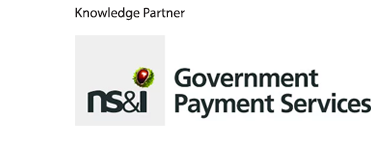Inability to balance public finances ranked top in list of interconnected risks facing governments

There is a critical need for governments to take an integrated approach to risk management in the face of intersecting economic, environmental and geopolitical challenges, according to a new report from consulting firm EY.
The ‘Top 10 risks for government and public sector in 2025’ report flags the inability to achieve sustainable public finances as the top risk facing governments this year, followed by weak or unsustainable public growth.
The report highlights that government spending in response to the shocks of recent years has resulted in high levels of global public debt, which the International Monetary Fund projects could reach 115% of GDP by 2026. Years of high interest rates have also increased the cost of borrowing and servicing debt and this could threaten investment in public infrastructure.
“To avoid a full-blown fiscal crisis, governments must start making difficult decisions now,” said Catherine Friday, EY’s global government and infrastructure leader. “By refocusing on indicators that determine the long-term value of public money based on the outcomes achieved, they can better prioritise investments and allocate resources. They can also make a better case for any necessary cuts to public spending.”
Training: Scenario Planning for Policy Makers
Megatrends
The risks identified are set against the backdrop of wider megatrends such as the rising cost of living and higher debt-to-GDP ratios, geopolitical complexity, climate change, demographic shifts, and rapidly advancing digitisation.
“Many of this year’s top 10 risks intersect and impact one another, compounding the complexity of both governing and the challenge of implementing resilient change,” EY said.
Other top risks identified are labour shortages and the growth of the informal work economy; deficient digital capacity and cybersecurity; and failure to adapt to a new geopolitical landscape.
Rounding out the top ten risks are lack of supply chain visibility; low employee resilience in the public sector; failure to close the gap between climate ambition and action; lack of resilience to climate-related shocks; and lack of connection to constituent experiences and needs.
The ranking is based on a horizon-scanning exercise using EY’s Risk Universe framework, along with expert interviews and proprietary and external data.

According to EY, government and public sector organisations will need to make a series of “difficult and potentially unpalatable trade-offs” to mitigate risk and prevent larger crises down the line.
Friday commented: “One such trade-off might be restraining fiscal policy to address mounting public debt or loosening fiscal policy to ease cost-of-living concerns. Another might be balancing the need to recruit new green businesses and investment with potential environmental, public health and other community concerns.
“Whatever the option, there will always be a cost. Yet, choosing the easy way out by delaying hard choices sets a course to a more precarious future.”
Read more: Climate concerns persist in 2025 but faith in government action wanes
A matter of public trust
The report anticipates “an increase in transactional decision-making on the world stage”, potentially “dismantling international agreements, alliances and norms, thereby contributing to instability and economic precarity”.
This could lead to unexpected disruptions in areas such as supply chains, trade and migration, which the report says in turn could undermine public resilience and erode trust in government.
Friday said: “With a deep sense of mistrust and dissatisfaction pervading many societies, the ability to manage risk effectively isn’t just necessary, it is a chance to build public trust and restore confidence. It is also a real opportunity for governments to prove to a sceptical public that proactive governance isn’t only possible but also provides tangible benefits.”
EY concludes that managing risk can no longer be a siloed activity relegated to annual planning or discussions between high-ranking officials. It says that public sector leaders need to continually evaluate risks on the horizon and engage stakeholders inside and outside their organisations to effectively adapt and respond.
The report’s findings chime with a speech given by Ireland’s chief economist last summer. Speaking at Global Government Forum’s Global Government Finance Summit, John McCarthy characterised the major challenges facing governments as the ‘four Ds’: demographic change, deglobalisation, decarbonisation and digitalisation.





















